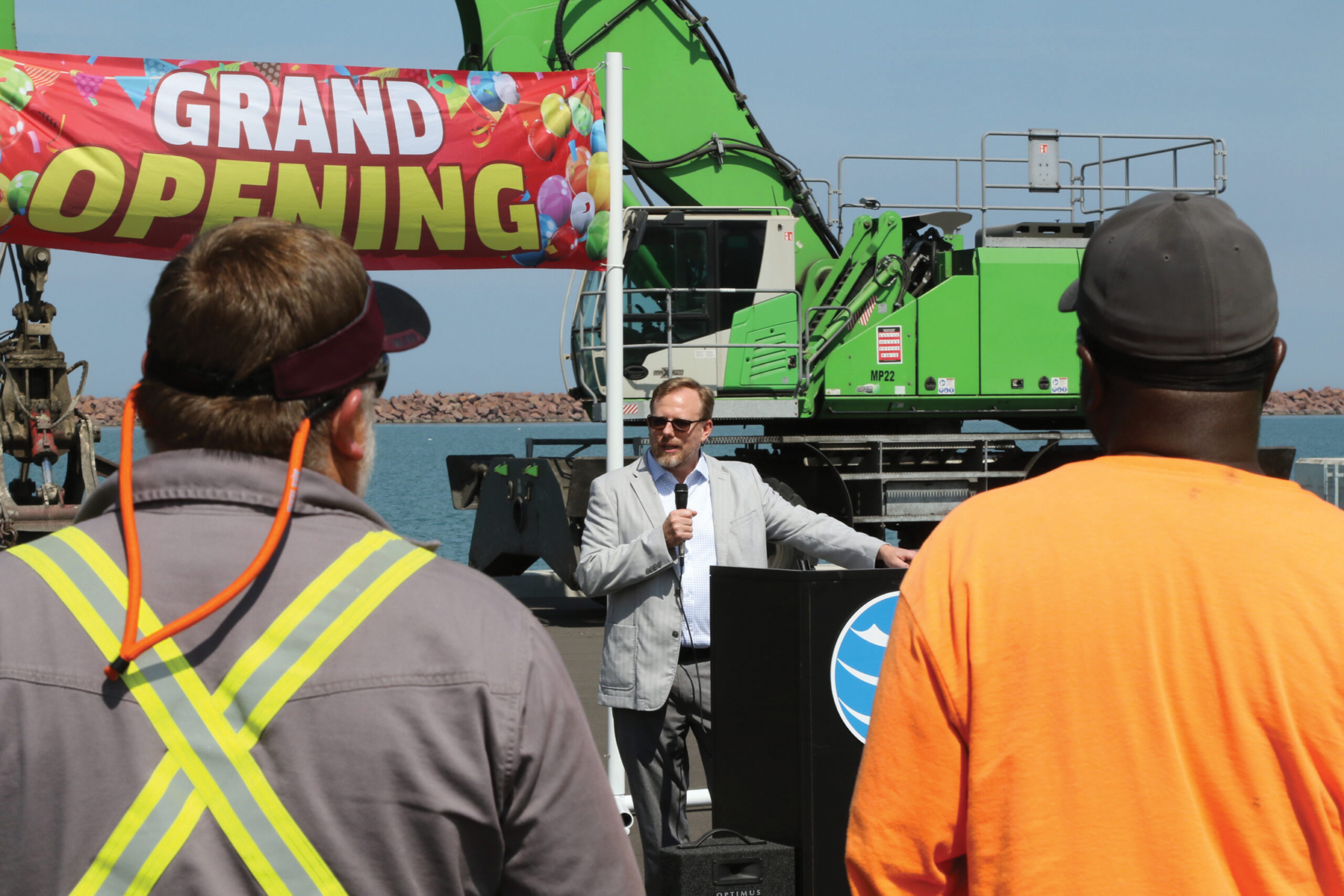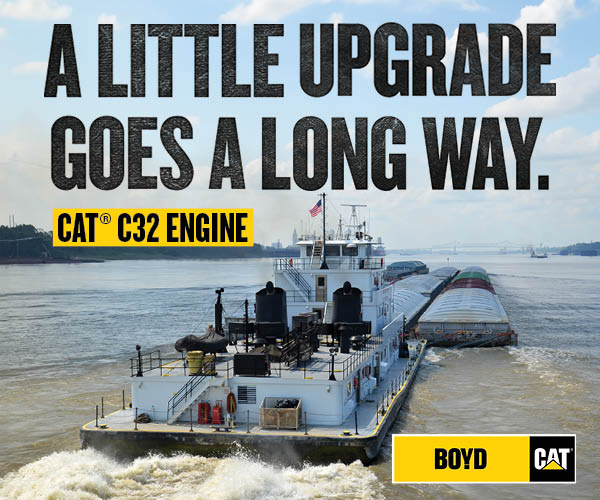Local officials and port workers celebrated the opening September 5 of a new, $6 million dock that will serve ocean vessels at Ports of Indiana-Burns Harbor. Partially funded by a U.S. Maritime Administration FASTLANE Grant, the project involved constructing more than 500 feet of new dock space that will handle bulk shipments via ocean vessels, lake carriers and river barges at the Lake Michigan port.
The new dock is just one part of a record construction boom at the port that kicked off in May. The new dock was constructed to handle self-unloading bulk ships and to quickly transfer cargoes to railcars, trucks, barges and nearby ground storage. Cargoes handled by the port that will likely use this dock include salt, fertilizer, limestone, taconite, foundry coke, grain products and various aggregates.
The celebration took place on the new “Berth 5” dock, located on the port’s northeast harbor, and was held in conjunction with a special labor appreciation picnic for members of the port’s workforce, including the International Longshoremen’s Association and the International Union of Operating Engineers.
“Today marks a historic day for this region, our workers and this port,” said Ports of Indiana CEO Jody Peacock. “This is the first new dock Ports of Indiana has opened in 20 years, and it signifies our commitment to support economic growth for our state. This new dock will provide critical global connections for Indiana companies and farmers as well as important jobs for local workers and their families. But the best part is, this new dock is just the beginning of our major growth plans for this port, and there is much more development to come.”
All-Water Container Route
In July, U.S. Customs and Border Protection (CBP) approved a proposal from the ports to establish the first international sea cargo container terminal on Lake Michigan. This would create the only all-water container route for ocean vessels to serve the greater Chicago metropolitan area via the Great Lakes.
“This is a critical step in a long process to establish a container terminal at Ports of Indiana-Burns Harbor and a new supply chain for international container shipments,” Peacock said. “Having an all-water container route into the Midwest could create transformational opportunities, but it will take time to develop. Our port has the capabilities to handle containers today, but we won’t be able to schedule regular container shipments until the Customs facilities are fully operational, potentially in 2026.”
Among U.S. Great Lakes ports, Cleveland and Duluth currently handle container vessels, while Monroe, Mich., is also pursuing CBP approval. Adding Burns Harbor to the list of Great Lakes container ports would allow shippers to make use of a network of container terminals that now includes the largest metropolitan area on the Great Lakes.
‘Transformational’ Expansion
“This port is going through a transformational multi-year expansion, and the amount of construction happening right now exceeds every year since the port was built in the 1960s,” Peacock said.
“These are critical projects that ensure our port remains an international gateway for ocean vessels, lakers and river barges, and that our multimodal infrastructure can meet growing freight demands in the northwest Indiana and greater Chicago market,” he said. “We’re extremely grateful for the leadership from our state and federal departments of transportation in supporting Indiana’s multimodal expansion.”
Current projects at the port include a $35.4 million dual bridge entrance. The Indiana Department of Transportation (INDOT) is building highway bridges to serve as the two inbound and two outbound lanes connecting the port to State Road 249. The 1,200-foot structures provide heavy-haul truck access for carrying port cargoes over 10 railroad tracks and six lanes of traffic. The multi-year construction project will add a new two-lane bridge and then rebuild the existing two-lane bridge. Both bridges will cross over U.S. Highway 12 as well as South Shore and Norfolk Southern rail lines. Once complete, the project will expand the port entrance from two lanes to four lanes.
he $25 million multimodal project is also being developed. Partially funded by a $9.85 million U.S. Department of Transportation FASTLANE grant, the port is constructing three ship berths and two railyards to expand shipping capabilities and improve efficiencies. Once completed, the projects will increase port capacity for handling ocean vessels by 35 percent and for handling railcars by 1,200 percent. By adding new storage capacity for 250 railcars, the port can now offer unit train service that reduces costs and expands market connectivity for rail shippers. The project will also turn three formerly unproductive areas of the port into working docks with multimodal facilities that transfer cargo between ocean vessels, Great Lakes freighters, river barges, multiple railroads and regional truck lines.
Bulk Cargo Facility
A $9 million bulk cargo facility is also being built. A new 84,000-square-foot warehouse and bulk storage area will be constructed near the East Harbor, funded in part by a $4 million U.S. Department of Transportation Maritime Administration grant from the Port Infrastructure Development Program. The project’s warehouse will increase the port’s capacity of covered bulk storage by 70 percent once completed in 2025.
“This is an exciting time for our port, and I am thrilled to see the amount of investment and capacity expansions happening right now,” Port Director Ryan McCoy said. “We have an aggressive investment strategy for this port that will drive new business into our region, create jobs for our longshoremen, operating engineers and construction workers and fuel growth for customers and port operators like Logistec, Metro Ports and Burns Harbor Railroad. We want to grow port business by helping our customers grow their business.”
McCoy specializes in supply chain management, community and business development, multimodal transportation, logistics and capital deployment. During his time with Cargill, Inc., McCoy led Cargill’s efforts to become the first organic-certified grain facility in the United States and, nearly six years ago, brought the first imported organic corn shipments into the Midwest market.
————
Photo caption: Ports of Indiana CEO Jody Peacock addresses guests gathered for the grand opening of Berth 5 at Burns Harbor. (Photos courtesy of Ports of Indiana)




